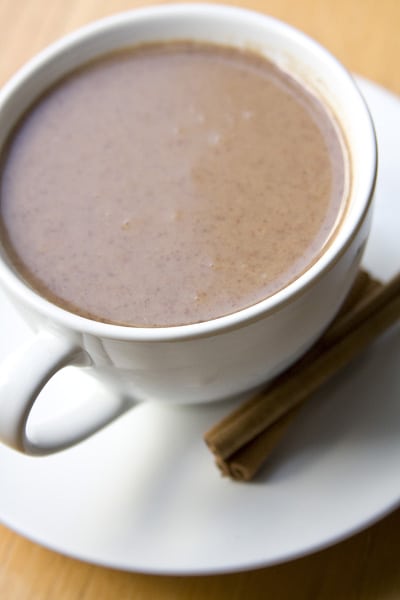Champurrado is a chocolate atole, a masa-based drink that is popular in Mexico.
Atole is made with a nixtamal (corn) base from dissolving masa in water, sometimes with piloncillo, and heating until it becomes thick. It’s a stick-to-your-ribs type drink that’s guaranteed to keep you warm. It can come in many flavors. Vanilla atole, strawberry atole, and champurrado are the most typical flavors, but other flavors, such as pumpkin atole, fruit and nut flavors, also exist.

While champurrado is similar to Mexican hot chocolate in that they’re both in the hot, chocolate beverage category, the major difference is the taste and texture from the corn base.
…